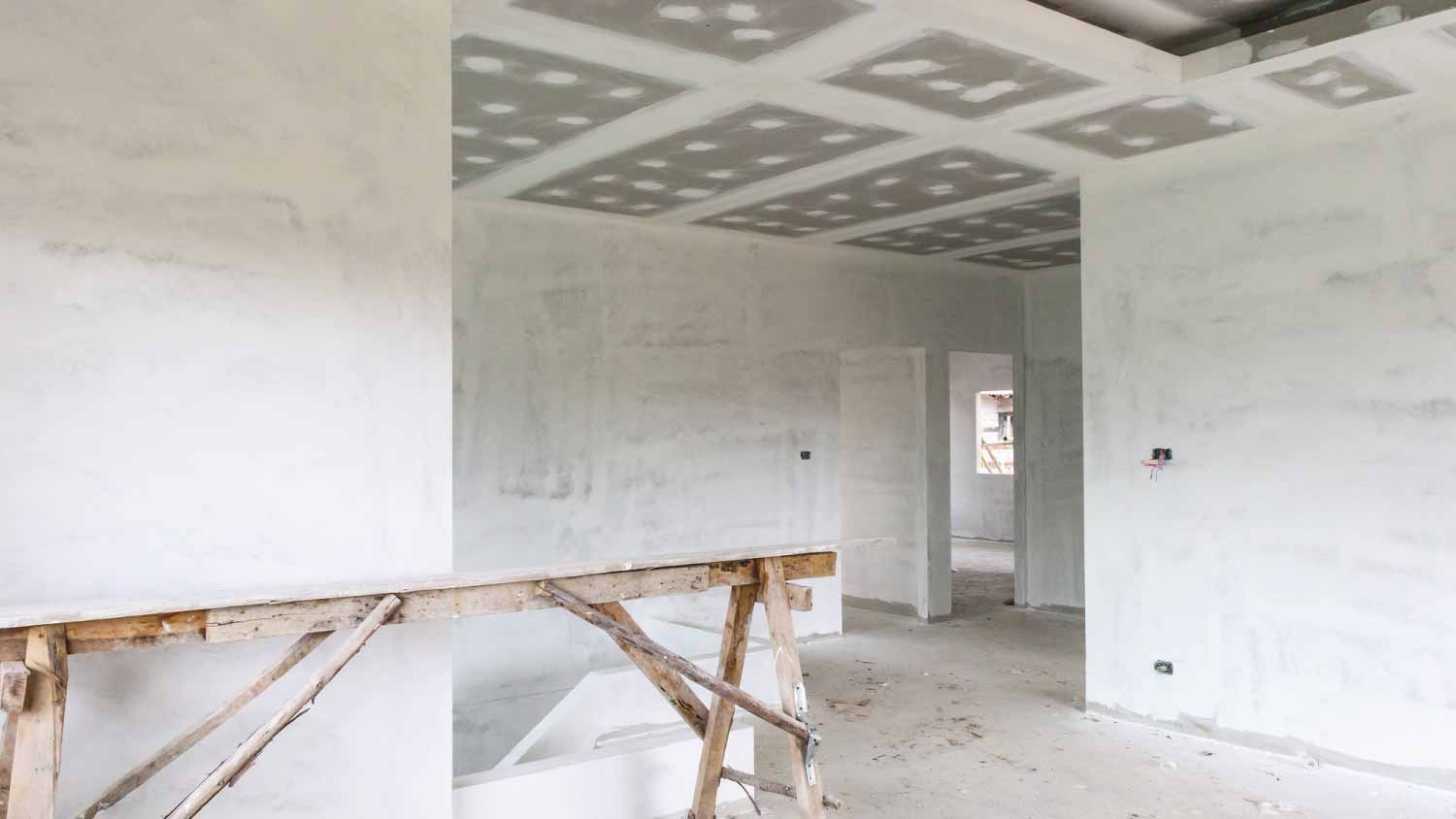
Whether you’re trying to keep noise in or out, soundproofing materials are the way to go. Use this guide to see how much it costs to soundproof a room.
Block out the noise


Soundproofing drywall offers a convenient way to reduce the noise coming into or out of your home.
It costs about $75 per sheet, compared to $10 per sheet for conventional drywall.
Alternatives, like wall hangings and noise-proofing compounds, can also reduce sound transmission.
If outside sounds are ruining your home theater setup or you love to play the drums to the dismay of your neighbors, consider the benefits of soundproofing drywall. You can install soundproofing drywall like traditional drywall, but soundproofing drywall contains a different type of core that helps reduce sound transmission. Learn more about this drywall option, which could keep you out of trouble with those within earshot of your DIY music studio.

Soundproofing drywall works like regular drywall, but the material in the core reduces the transmission of sound through the wall. Your average drywall consists of gypsum plaster sandwiched between layers of paper.
Soundproofing drywall has a similar construction, with material sandwiched between layers of paper. However, the core consists of gypsum combined with ceramics and special compounds that dampen sound.
Some sound-dampening drywall contains a steel core, which enhances impact resistance and prevents dents or holes while still reducing sound transmission. When deciding how to soundproof a wall, assess the noise level and talk with a drywall installer near you to determine the best type of soundproofing drywall for your home.
The price of soundproofing a room with soundproof drywall ends up costing more than installing standard drywall. In some cases, you can install multiple layers of regular drywall instead, but the additional labor, materials, and other adjustments (such as extending electrical boxes or other receptacles to reach past the drywall) will increase the final cost.
Price out both options to see which is more cost-effective. Soundproofing drywall can cost up to $75 per sheet (½ inches deep, 4 feet wide, and 8 feet long), while average drywall can cost as little as $10 for a sheet of the same size.
Certain types of soundproofing drywall offer added benefits, such as mold or impact resistance, that improve a space’s durability and meet needs that conventional drywall can’t.
Soundproofing drywall is heavier than standard drywall, and some types feature a steel core that requires a saw to cut. Another disadvantage of installing soundproofing drywall is that it could disrupt signals for cell phones and Wi-Fi.

Soundproofing drywall may be the right choice if you live in a loud neighborhood or at a busy intersection. It can also be beneficial if you have a clamorous household and want to spare your neighbors and avoid noise complaints.
Soundproofing or sound-dampening drywall may enhance a work-from-home space by keeping sound out and giving you a peaceful space to focus. Finally, if you’re building a home theater or want additional soundproofing in the TV room, you can install soundproofing drywall for added sound protection.
If you’re building a new home or undergoing a remodel, it’s a good time to consider soundproofing your walls. Installing drywall will be part of the process either way, so you can get the added benefits of soundproofing your space and creating a comfortable environment.
In some cases, soundproofing drywall may not be worth it for your situation. If you’re on a budget, sticking to conventional drywall can help keep costs down. And if noise isn’t an issue for you or your household is on the quiet side, you can probably skip the soundproofing.
Soundproofing drywall may be your best bet if you need to soundproof a room in a new build. But in an existing home, the task of removing the current drywall and replacing it with a soundproofing version may not be your best option.
There are a few other ways to soundproof your house that can help reduce sound transmission for a quieter environment. However, remember that most of these alternatives offer sound absorption versus soundproofing.
Wall hangings: Wall hangings, like tapestries, thick blankets, or moving pads, can absorb sound and reduce its ability to travel through the walls or bounce back into the room. The thicker the hanging, the better.
Sound-absorbing panels: Made from soft foam, cork, or rubber, these panels may not be the most aesthetic choice, but they can get the job done.
Additional layers of conventional drywall: As discussed above, an option for soundproofing is to install multiple layers of conventional drywall. But this will add to the total cost of drywall installation and may require additional modifications, like extending the receptacles for electrical work and increasing the weight capacity of the wall.
Noise-proofing compound: Noise-proofing compounds—applied between layers of drywall—can stop noise from passing between the sheets and into the next room.
From average costs to expert advice, get all the answers you need to get your job done.

Whether you’re trying to keep noise in or out, soundproofing materials are the way to go. Use this guide to see how much it costs to soundproof a room.

Pre-drywall inspection costs vary depending on the home size, build complexity, and reporting you receive. Estimate your budget with this cost guide.

Installing drywall is the most common way to finish your home’s interior. Use this drywall installation cost guide to see what your project is likely to cost.

If you’re planning to DIY your drywall installation, you’re probably wondering how much a sheet of drywall weighs. Let’s take a look.

Looking to add some texture to your walls for a unique finish? Use this guide to estimate skip trowel texture cost to see if it’s the right option for you.

Wondering if you can glue drywall instead of nailing it in place? Learn the pros and cons of drywall adhesive here. We’ve done the research for you.